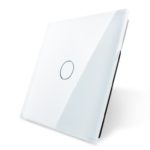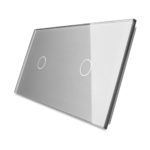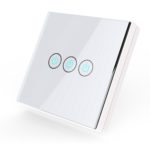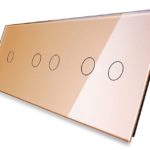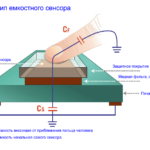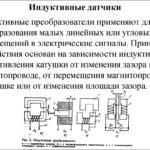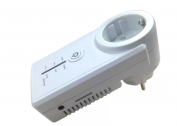"Smart Home" has long become a reality and is gaining popularity. Useful gadgets and programmable electrical appliances facilitate the life of a person. The touch switch can be part of the complex or used separately. Mechanical pressing is no longer the only trailing signal. The device is based on the electrical conductivity of the human body or the reflection of infrared rays. The sensor responds to a light touch or movement.
Smart Switch Design
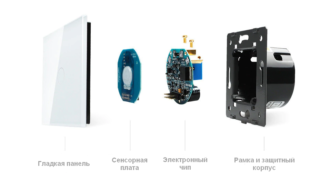 The concept of “touch” is interpreted differently depending on the source. In a broad sense, it is an analogue of a power button or button that responds to voice, movement, the degree of illumination of a room, etc. It does not require a mechanical action. In the narrow sense, a device operating due to the energy intensity of a person. The limb of a person, approaching a sensitive plate, becomes part of the electrical circuit, closes it. Due to the action of a special element of the circuit (trigger), there is no opening after the stimulus is removed, a stable state of the system is maintained. The absence of moving parts eliminates their breakdown and facilitates wet cleaning of the surface.
The concept of “touch” is interpreted differently depending on the source. In a broad sense, it is an analogue of a power button or button that responds to voice, movement, the degree of illumination of a room, etc. It does not require a mechanical action. In the narrow sense, a device operating due to the energy intensity of a person. The limb of a person, approaching a sensitive plate, becomes part of the electrical circuit, closes it. Due to the action of a special element of the circuit (trigger), there is no opening after the stimulus is removed, a stable state of the system is maintained. The absence of moving parts eliminates their breakdown and facilitates wet cleaning of the surface.
The constituent elements:
The outer part is a front glass or plastic panel and a refractory case. Square, rectangular patterns are more common than round ones. The size corresponds to a conventional key switch, which allows you to use a standard socket for installation. The cover function is protective and decorative.
The sensitive element is a plate with capacitive sensors or a pair of infrared emitter + receiver, additional sensors may be present. The task of the sensor is to capture the signal from the outside.
The power component is a printed circuit board with SMD components: power supply, amplifiers, microcontroller, radio channel board, key, volatile memory.
Sometimes an additional capacitor is included in the kit to prevent the background glow of discharge lamps in the off state.
Switch Classification
To choose the right communicator, you should proceed from the purpose of the room, the number and characteristics of the fixtures. According to the parameter voltage of the device are:
- 220 V - a standard indicator for most devices;
- 12 V - suitable for LED strips and some other types of illuminators.
By the number of connected light sources, single, double, triple switches are used. A larger number is more convenient to control with a remote control.
By type of key, you can select:
- with an electromagnetic relay - a closure occurs mechanically, so the contacts burn out over time;
- equipped with a triac - semiconductor device.
Types of sensor in household switches:
- capacitive - requires a light touch;
- optical - reacts to movement or light level;
- high-frequency - tuned for presence, occupancy of the room (volume), movement.
Additional functions:
- motion sensors, volume, sound;
- wireless control;
- smooth decrease in brightness when turned off;
- timer.
Touch switches expand lighting capabilities, simplify control, and save time and energy. They can be autonomous or mounted in the housing of lamps: floor lamps, table lamps, LED profiles.
Self-assembly of touch communicators
The main disadvantage of smart switches is the price. The presence of basic knowledge of electrical engineering will help to assemble home-made. Home craftsmen use 3 main assembly options.
The circuit of the touch button on transistors is the simplest. For its implementation, a breadboard is required, on which KT315 transistors and an electromechanical relay are mounted in series, in parallel with which a protective diode must be installed. The sensor will be a wire from the base of the transistor connected to the network. The circuit can be complicated by adding an optocoupler and a trigger in front of the relay (NE555 timer or K561TM2 chip). This modification will allow the network to fix the command.
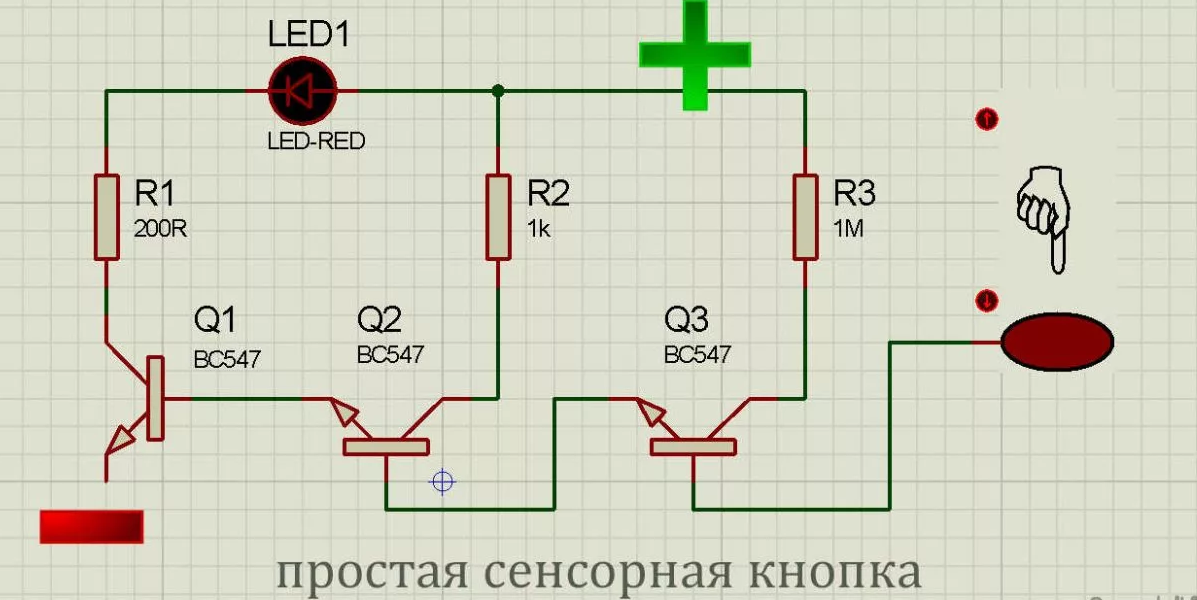
You can assemble the infrared sensor switch with your own hands by adding a rectangular pulse generator to the circuit. To increase the current from the generator, an infrared flashing LED will help. On the chip, the time interval is set. It determines how long after the signal ceases to receive light. If the reflection of the beam hits the photodetector, the counter K561IE20 or CD4040 will give a unit, the circuit will be closed. In the absence of a signal at all pins, logic zero, no voltage is supplied, the control transistor does not pass current.

Industrial touch sensors can be modified and the sensitivity area expanded. Under the lid you need to find the capacitive element and solder the thin wires to it. Then lay the conductor with increasing rings until the entire perimeter is filled. Replace the cover plate.
The switches are adapted not only to the fixtures, but also as a doorbell, curtain retractor and more. All parts can be purchased on radio markets or Chinese Internet platforms at a budget price.
Installation Safety
Before installation, be sure to disconnect the network by lowering the circuit breaker in the switchboard. Touch communicators are mounted without a front panel. The pole rule is respected. If there is a grounding wire in the line, it is connected to the marked contact. The ends of a stranded cable are crimped or deserve to be tightly fixed and avoid overheating.
Do not use devices with obvious damage or not designed for the specified network load. Homemade 220V touch-sensitive light switches do not always withstand - most home circuits are designed for low-voltage consumers.
Do not start installation before reading the manufacturer's instructions.
